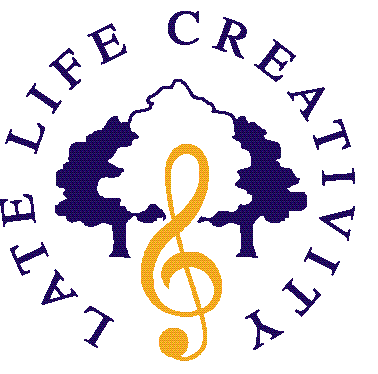

Age-Related Health Care, a specialist healthcare unit for older people at Tallaght Hospital, is pleased to present an overview of late creativity, which was linked to series of programmes on Lyric FM.
Arguably the greatest triumph of civilization in the second part of the 20th century is that the majority of us will live into old age. However, due to negative perceptions of ageing in society, it is not uncommon to hear this great advance spoken of in negative terms, for example, the 'demographic time-bomb' or the 'greying tide'. We did not hear the same negative language when the enormous child mortality of the late nineteenth century was overcome: no-one spoke of a 'wailing tide'! A part of this prejudice is a failure to discern that ageing also means growth in certain skills and qualities. As a society we are romantically attached to the notion of creativity as synonymous with youth, especially when cut short tragically. Le Grand Meaulnes by Alain Fournier, Mozart's unfinished requiem, the brief but stellar life of Keats are examples of the popular myth.
This myth really represents the short life span of these times: a look to the late paintings of Titian, Monet, de Kooning, and Yeats, the writing of Cervantes, Hugo, and Tennyson and the scientific contributions of Galileo, Franklin and Leeuwenhoek shows the reverse side of the coin, which is a flowering of creativity in later life. Musical interpreters - Stokowski, Horowitz, Rubinstein and latterly Gunther Wand, Kurt Sanderling, are cogent examples that late old age brings exceptional musical vision without a loss of dynamism. By the end of this discourse about music composed in later life, I hope that you will be convinced that not only does creativity continue into later life but also that it develops and flourishes. The choice is so enormous that many composers - Byrd, Tallis, Berwald, Telemann, Saint-Saens, Brahms, Vaughan-Williams, Berio, Cage, Stockhausen, Ligeti, Martinu, Delius, Arnold - are ommitted.
We start in the late Middle Ages when life expectancy was most probably in the late 30s. However at all times people have lived to advanced age and one of these remarkable people, a survivor amongst survivors, was Hildegard Von Bingen the mystic, abbess, and composer. As we do not know the exact dates of many of her compositions, we do know that she was travelling the Rhineland in her 77th year preaching to clergy and lay people about the need for reform in the church. Her songs are the most vital of her artistic creations, beautiful in the language and with strikingly original music. A good example is O Ecclesia, celebrating the martyrdom of St Ursula
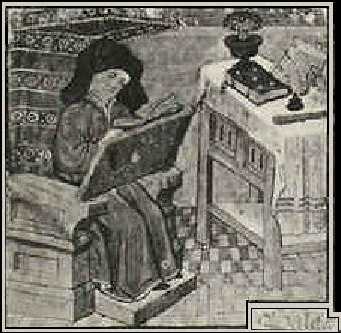 As
we move forward into the Renaissance, the longevity of key composers
is remarkable. Guillaume de Machaut was active as a composer into his
70ís and is one of the undisputed geniuses of Western music.
His life and work are thus extremely well-preserved for the period.
Machaut remains best-known for his Messe de Nostre Dame, the
earliest mass by a single composer. His late-life creativity is
clearly seen in music for his more than one hundred poems, from a
series le Voir Dit, which relate an amorous correspondence
between the composer (in his 60's) and a young admirer
As
we move forward into the Renaissance, the longevity of key composers
is remarkable. Guillaume de Machaut was active as a composer into his
70ís and is one of the undisputed geniuses of Western music.
His life and work are thus extremely well-preserved for the period.
Machaut remains best-known for his Messe de Nostre Dame, the
earliest mass by a single composer. His late-life creativity is
clearly seen in music for his more than one hundred poems, from a
series le Voir Dit, which relate an amorous correspondence
between the composer (in his 60's) and a young admirer
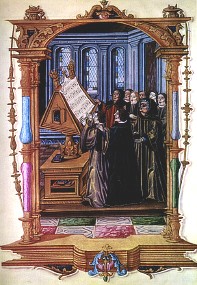 The great franco-flemish composer
Johannes Ockeghem lived to 87, and was chaplain and composer to no
less than 3 French kings. Although none of his music was dated, his
Requiem is presumed to be have written in his 60ís. It is the
oldest polyphonic Missa pro defunctis extant. It is full of
innovation. In the Kyrie, the first eight invocations all employ the
same melody: the first half of the last invocation has new music, but
the rest is sung to the same material as served for the second half
of each earlier invocation, leading to an impressive final cadence. A
near-contemporary portrait shows Ockeghem in old age, wearing
spectacles among his students. This use of an aid to overcome one of
the vicissitudes of ageing, as early as the 15th century,
is a key to how the negative sides of ageing can be overcome or
compensated for.
The great franco-flemish composer
Johannes Ockeghem lived to 87, and was chaplain and composer to no
less than 3 French kings. Although none of his music was dated, his
Requiem is presumed to be have written in his 60ís. It is the
oldest polyphonic Missa pro defunctis extant. It is full of
innovation. In the Kyrie, the first eight invocations all employ the
same melody: the first half of the last invocation has new music, but
the rest is sung to the same material as served for the second half
of each earlier invocation, leading to an impressive final cadence. A
near-contemporary portrait shows Ockeghem in old age, wearing
spectacles among his students. This use of an aid to overcome one of
the vicissitudes of ageing, as early as the 15th century,
is a key to how the negative sides of ageing can be overcome or
compensated for.
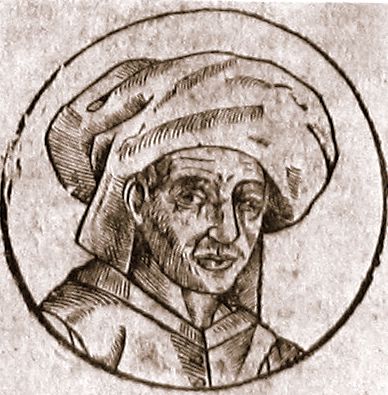 Josquin
DesPrez was a star of the first magnitude of the late Renaissance,
active in composing until his death at 81. He was also a master
diplomat. While maitre de chapelle to Louis XII, a poor singer, he
wrote a piece where the part designated vox regis consisted of a
single note repeated all the way throughout! His motets are his most
adventurous works, but he was also the greatest composer of chanson
of his time. He built on and broke away from the old formes fixes and
used a great variety of repetition schemes.
Josquin
DesPrez was a star of the first magnitude of the late Renaissance,
active in composing until his death at 81. He was also a master
diplomat. While maitre de chapelle to Louis XII, a poor singer, he
wrote a piece where the part designated vox regis consisted of a
single note repeated all the way throughout! His motets are his most
adventurous works, but he was also the greatest composer of chanson
of his time. He built on and broke away from the old formes fixes and
used a great variety of repetition schemes.
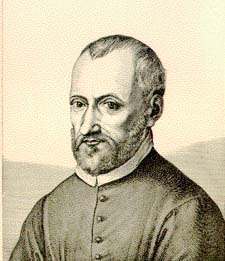 Giovanni
Palestrina, along with Lassus and Byrd, was one of the three great
composers of the twilight period of Renaissance music: all were
relatively long-lived and productive in later life.
Palestrinaís output was affected by the death of his first
wife, two sons and brother from the plague when he was 50. However
his creativity flourished at the end of his life and an example is
the Laudate domine from his 69th year.
Giovanni
Palestrina, along with Lassus and Byrd, was one of the three great
composers of the twilight period of Renaissance music: all were
relatively long-lived and productive in later life.
Palestrinaís output was affected by the death of his first
wife, two sons and brother from the plague when he was 50. However
his creativity flourished at the end of his life and an example is
the Laudate domine from his 69th year.
At this stage in our exploration, can we find a pattern emerging? If anything, that the compositions of ageing are associated with an increase in power, subtlety and a loosening of the ties of orthodoxy and convention. The cliché 'autumnal' is inappropriate: those who wrote autumnal music in later life, such as Brahms, on closer examination have written autumnal music all their life. In most cases, late-life creativity means better and more powerful.
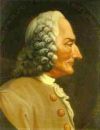 The
late works of Rameau illustrate this with force. As a septuagenerian
he wrote Les Boréades, one of the hits of this yearís
Salzburg festival, and Anacréon, an opera-ballet of
unsurpassed lyricism, fluidity and vitality.
The
late works of Rameau illustrate this with force. As a septuagenerian
he wrote Les Boréades, one of the hits of this yearís
Salzburg festival, and Anacréon, an opera-ballet of
unsurpassed lyricism, fluidity and vitality.
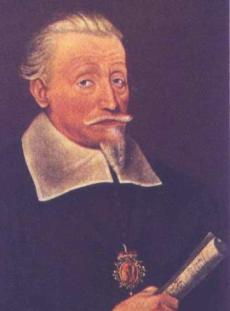 During
his long life Heinrich Schütz, produced many pieces of music
which introduced new techniques and idioms into Germany, while
promoting the use of the German language as a medium for music of all
sorts. Schutz composed into his 80ís. His Christmas Story,
composed in his 60ís is a succession of set pieces linked by
narrative, and the use of different textures to illustrate this
series of portraits is the most obvious sign of the composer's
genius. In the Intermedium, the Company of Angels, the
accompaniment by two violas gives a particularly effective
sonority.
During
his long life Heinrich Schütz, produced many pieces of music
which introduced new techniques and idioms into Germany, while
promoting the use of the German language as a medium for music of all
sorts. Schutz composed into his 80ís. His Christmas Story,
composed in his 60ís is a succession of set pieces linked by
narrative, and the use of different textures to illustrate this
series of portraits is the most obvious sign of the composer's
genius. In the Intermedium, the Company of Angels, the
accompaniment by two violas gives a particularly effective
sonority.
What underpins the positive contribution of ageing? One of the hall-marks of ageing is an increase in inter-individual variability, and only the brave or fool-hardy would attempt to characterize the processes of creativity in later life. The most obvious common feature is that the attributes of later life, perhaps best termed as wisdom, contribute enormously to the creative process. Baltes has proposed five criteria which help to understand the domain of wisdom: rich factual knowledge, rich procedural knowledge, contextualism, relativism, uncertainty. Some of these factors can be perceived in an artistic endeavour which is often marked by continuing development, a heightened sense of the overall structure of the works and an economy of means. Later works often break out of the conventional barriers, and may be appreciated more by subsequent than contemporary generations. The impact of the late paintings of Monet on the American Expressionists is a case in point.
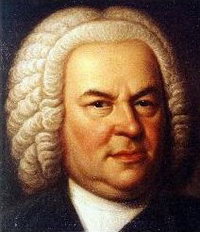 JS
Bach (1685-1750) continued composing until the end of his life, and
some of his greatest works were completed after the age of 60. His
final, great unfinished work, the Art of the Fugue has acquired a
semi-mythic status, akin to other testamentary works such as Schutz
Psalm 119 or Bruckner's 9th symphony. The Musical Offering
was composed at the age of 63 as a gift to Frederick II of Prussia.
Melody, harmonic assurance and audacity combine with a mighty sense
structural and formal perfection.
JS
Bach (1685-1750) continued composing until the end of his life, and
some of his greatest works were completed after the age of 60. His
final, great unfinished work, the Art of the Fugue has acquired a
semi-mythic status, akin to other testamentary works such as Schutz
Psalm 119 or Bruckner's 9th symphony. The Musical Offering
was composed at the age of 63 as a gift to Frederick II of Prussia.
Melody, harmonic assurance and audacity combine with a mighty sense
structural and formal perfection.
Both Bach and Handel had unsuccessful eye surgery for failing sight. It is tempting to speculate on how different the outcome would have been given todayís surgical techniques. Although increases in longevity have mainly come about by social measures: increasing wealth, better nutrition, improved sanitation, improvements in healthcare technology have the greatest effect on older people. Cataract surgery, hip replacement and cardiac by-pass offer greatly improved quality of life for older people. Better attention to mental health, especially with the new specialty of Psychiatry of Old Age, can also dramatically relieve needless suffering. Would adequate treatment of Elgarís depression following the death of his wife averted the creative hiatus? If modern oncology had been available to Bela Bartok, would his late lyrical phase have been prolonged? If we wish to support late-life creativity we must ensure that older people have full and free access to such services.
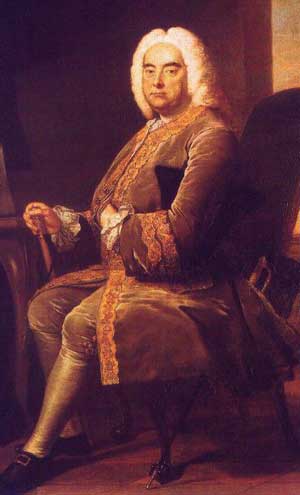 Although
Handel was hampered in later years by failing sight, he wrote the
Music for the Royal Fireworks, and the oratorios
Solomon and Judas Maccabeus after the age of 60.
Solomon is characterized by magnificent choruses (mostly in
eight parts), one of the most elaborate orchestras deployed by the
composer, and contains rapturous love music, nature imagery and
intense drama. The Act III sinfonia (christened, inaccurately, the
Arrival of the Queen of Sheba) is one of the best-known pieces from
the oratorio.
Although
Handel was hampered in later years by failing sight, he wrote the
Music for the Royal Fireworks, and the oratorios
Solomon and Judas Maccabeus after the age of 60.
Solomon is characterized by magnificent choruses (mostly in
eight parts), one of the most elaborate orchestras deployed by the
composer, and contains rapturous love music, nature imagery and
intense drama. The Act III sinfonia (christened, inaccurately, the
Arrival of the Queen of Sheba) is one of the best-known pieces from
the oratorio.
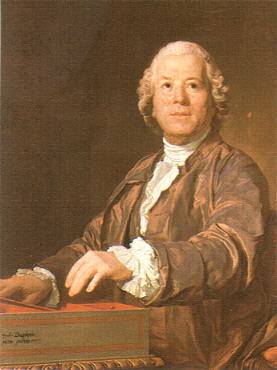 Christoph
Willibald Gluck pioneered a new style of opera, with an instance on
the primacy of the dramatic plot. Music should advance and support
this and interpret the emotions of the poetry. A stylistic and
structural is development is evident in his operas and orchestra and
chorus took part in the dramatic development. Iphigenie en Aulide,
composed at 60, inaugurated the era of the symphonic overture and
Iphigenie en Tauride 65, excluded the ballet and realised the unified
dramatic form towards which Gluck had worked throughout his
life.
Christoph
Willibald Gluck pioneered a new style of opera, with an instance on
the primacy of the dramatic plot. Music should advance and support
this and interpret the emotions of the poetry. A stylistic and
structural is development is evident in his operas and orchestra and
chorus took part in the dramatic development. Iphigenie en Aulide,
composed at 60, inaugurated the era of the symphonic overture and
Iphigenie en Tauride 65, excluded the ballet and realised the unified
dramatic form towards which Gluck had worked throughout his
life.
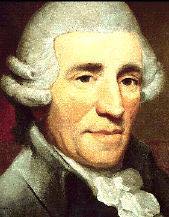 The
mature Haydn could commandeer several full programmes on Late-Life
Creativity. The oratorios the Creation and the Seasons,
the symphonies 97-104, the string quartets Op 71, 74, 76 and 77
represent the pinnacle of development of one of the greatest
composers in Europe between 1760 and 1810. As it with many composers
a progression in sophistication, simplicity and experimentation can
be seen with later works. While the construction of the great
oratorio, the Creation, is traditional, there are many innovations
and developments from his late masses including the constant
juxtaposition of choir and soloists. The orchestra is the largest
ever used by Haydn and the instrumentation had never previously been
as brilliant and resourceful. There are some breath-taking moments
not only in its harmonic modernity (for example, the Tristan-like
augmented cords at the end of the Introduction) but also in its
marvellous orchestration. At the age of 65 it is clear that Haydn
took this composition very seriously. He told his biographer "I was
never so religious as during the composition of the creation, daily I
fell on my knees and asked God for strength". On being asked why he
had taken so long with the work he replied "because I intend it to
last for a long time".
The
mature Haydn could commandeer several full programmes on Late-Life
Creativity. The oratorios the Creation and the Seasons,
the symphonies 97-104, the string quartets Op 71, 74, 76 and 77
represent the pinnacle of development of one of the greatest
composers in Europe between 1760 and 1810. As it with many composers
a progression in sophistication, simplicity and experimentation can
be seen with later works. While the construction of the great
oratorio, the Creation, is traditional, there are many innovations
and developments from his late masses including the constant
juxtaposition of choir and soloists. The orchestra is the largest
ever used by Haydn and the instrumentation had never previously been
as brilliant and resourceful. There are some breath-taking moments
not only in its harmonic modernity (for example, the Tristan-like
augmented cords at the end of the Introduction) but also in its
marvellous orchestration. At the age of 65 it is clear that Haydn
took this composition very seriously. He told his biographer "I was
never so religious as during the composition of the creation, daily I
fell on my knees and asked God for strength". On being asked why he
had taken so long with the work he replied "because I intend it to
last for a long time".
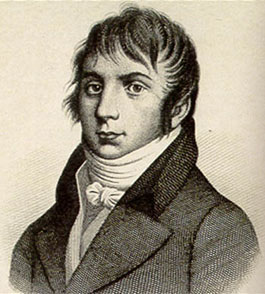 While Berlioz was the Paris
Conservatoire, the director was Luigi Cherubini. Despite what David
Cairns describes as a cat-and-mouse relationship while Berlioz was
trying to present his early works, there was a mutual if grudging
recognition of each otherís works. Beethoven regarded him as
the greatest of his contemporaries. Many will be familiar with his
Requiem in C Minor. At the age of 76 he composed the dark and moving
Requiem in D Minor for male chorus and orchestra.
While Berlioz was the Paris
Conservatoire, the director was Luigi Cherubini. Despite what David
Cairns describes as a cat-and-mouse relationship while Berlioz was
trying to present his early works, there was a mutual if grudging
recognition of each otherís works. Beethoven regarded him as
the greatest of his contemporaries. Many will be familiar with his
Requiem in C Minor. At the age of 76 he composed the dark and moving
Requiem in D Minor for male chorus and orchestra.
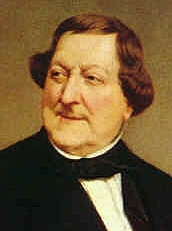 Rossini
retired from the operatic stage at the age of 67. While his next nine
years were dogged by ill health he began to compose again from the
late 1850s onwards. His Sins of his Old Age, some 150 piano pieces,
songs and works for vocal ensemble, and the Petite Messe Solennelle
were published for the most part in the 1950s. Most of the Sins of
his Old Age were performed at weekly soirees which he held at his
rooms in the Rue de Chaussée D'antin between December 1858 and
his death 10 years later. Auber Gounod, Liszt, Saint-Saëns and
Verdi were only some of the composers who deemed it an honour to be
invited to join diplomats, politicians, singers and the well-to-do
who, in groups of no more than a dozen, were entertained by culinary
musical fare. The range, humour, wit and sensitivity is
extraordinary. In his album Francais there is the opening Toast
pour le nouvel an a rollicking celebration of both the Blessed
Virgin Mary and champagne to the final Choeur de chasseurs
democrates a male voice chorus with a percussion
accompaniment.
Rossini
retired from the operatic stage at the age of 67. While his next nine
years were dogged by ill health he began to compose again from the
late 1850s onwards. His Sins of his Old Age, some 150 piano pieces,
songs and works for vocal ensemble, and the Petite Messe Solennelle
were published for the most part in the 1950s. Most of the Sins of
his Old Age were performed at weekly soirees which he held at his
rooms in the Rue de Chaussée D'antin between December 1858 and
his death 10 years later. Auber Gounod, Liszt, Saint-Saëns and
Verdi were only some of the composers who deemed it an honour to be
invited to join diplomats, politicians, singers and the well-to-do
who, in groups of no more than a dozen, were entertained by culinary
musical fare. The range, humour, wit and sensitivity is
extraordinary. In his album Francais there is the opening Toast
pour le nouvel an a rollicking celebration of both the Blessed
Virgin Mary and champagne to the final Choeur de chasseurs
democrates a male voice chorus with a percussion
accompaniment.
The title of the Petite Messe Solennelle is another Rossinian jest as it is neither petite nor particularly solenelle and is very operatic for a mass. It is clear from the score that Rossini lavished an unusual amount of time and care on the project. It is in four parts with accompaniment of two pianos and harmonium. By all accounts the small but select audience at the premier was overwhelmed by Rossiniís new masterpiece. Meyerbeer in particular was ecstatic, trembling and even weeping at times.
In his introduction to the score Rossini wrote: Twelve singers of three sexes - men, women and castrati - will be sufficient for its execution: that is eight for the chorus, four for the solos, a total of twelve cherubim. Dear God, forgive the following comparison: twelve also are the Apostles in the fresco by Leonardo, called the Last Supper, who would believe it! Among thy disciples are some who would strike false notes!! Lord, rest assured, I swear that there will be no Judas at my supper and that mine will sing properly and con amore your praises and this little composition which is, alas, the final sin of my old age.
At the end of the manuscript there is another message to God: Dear God, there you have it, finished, this poor little mass. Is it really sacred music or damnable music (musique sacrée ou sacrée musique) that I have made? I was born for opera buffa, as you well know! Little technique, a little heart, that is all. Be thou blessed and grant me Paradise.
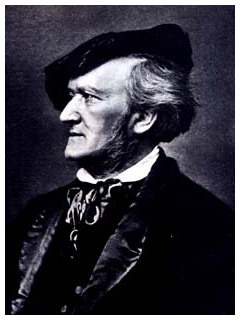 Although
Wagner spoke well of Rossini - 'of all the musicians that
I met in Paris, he was the only great one' - Rossini
could not contain his wit when talking of Wagner.
'Wagner's operas contain many wonderful moments but some
terrible quarters of an hour' or 'Wagner's operas
are better than they sound'. A constant progression in scale
and technique is visible in the works of Richard Wagner. It was not
until Lohengrin, at the age of thirty-three, that his musical
language and technique took shape and his dramatic qualities were
fully realized. From then onwards he continued ceaselessly to perfect
his own dramatic formulae and develop a unique musical language.
Siegfried's Death and Funeral Music from the Twilight of the
Gods is a potent evocation of this progression, a process which
culminated with Parsifal, completed at the age of
69.
Although
Wagner spoke well of Rossini - 'of all the musicians that
I met in Paris, he was the only great one' - Rossini
could not contain his wit when talking of Wagner.
'Wagner's operas contain many wonderful moments but some
terrible quarters of an hour' or 'Wagner's operas
are better than they sound'. A constant progression in scale
and technique is visible in the works of Richard Wagner. It was not
until Lohengrin, at the age of thirty-three, that his musical
language and technique took shape and his dramatic qualities were
fully realized. From then onwards he continued ceaselessly to perfect
his own dramatic formulae and develop a unique musical language.
Siegfried's Death and Funeral Music from the Twilight of the
Gods is a potent evocation of this progression, a process which
culminated with Parsifal, completed at the age of
69.
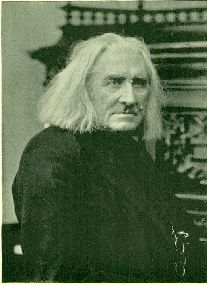 In
the late works of Franz Liszt such as Les jeux d'eaux à
la Villa d'Este, the composer appears as the precursor of
Impressionism, and anticipates Debussy's shifting harmonic scheme and
the techniques used by Ravel. Begun when Liszt was 24, the
Années de Pèlerinage were completed between the
ages of 52 and 71.
In
the late works of Franz Liszt such as Les jeux d'eaux à
la Villa d'Este, the composer appears as the precursor of
Impressionism, and anticipates Debussy's shifting harmonic scheme and
the techniques used by Ravel. Begun when Liszt was 24, the
Années de Pèlerinage were completed between the
ages of 52 and 71.
 The
symphonies of Bruckner belie the popular conception of Naif,
throughout the symphonies we find increasing sophistication and
subtlety in both the enormous expansion of structure and the placing
of the so-called motto theme. His final unfinished symphony was
co-composed within the ages of 70 and 72 and represents a culmination
of this process.
The
symphonies of Bruckner belie the popular conception of Naif,
throughout the symphonies we find increasing sophistication and
subtlety in both the enormous expansion of structure and the placing
of the so-called motto theme. His final unfinished symphony was
co-composed within the ages of 70 and 72 and represents a culmination
of this process.
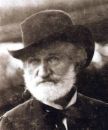 When
one realizes that wrote Otello at age 74 and Falstaff at age 80, the
Requiem (composed at age 61) seems almost like an early work!
Falstaff is one the most perfectly formed of Verdiís operas.
As Toscanini said: "no opera is more beautiful, more complete, newer
and more Latin than Falstaff. Think of how many musical means -
beautiful ones, to be sure - Wagner requires to describe the Nurnberg
night. And look how Verdi achieves a similarly evocative effect at a
theatrically similar moment using three notes".
When
one realizes that wrote Otello at age 74 and Falstaff at age 80, the
Requiem (composed at age 61) seems almost like an early work!
Falstaff is one the most perfectly formed of Verdiís operas.
As Toscanini said: "no opera is more beautiful, more complete, newer
and more Latin than Falstaff. Think of how many musical means -
beautiful ones, to be sure - Wagner requires to describe the Nurnberg
night. And look how Verdi achieves a similarly evocative effect at a
theatrically similar moment using three notes".
So what is ageing? St Augustine in his Confessions wrote: "What, then, is time? If no one asks of me, I know; if I wish to explain to him who asks, I know not!" Trying to explain ageing can be just as difficult. A baby seems to be a very young form of life. Yet the egg from whence the baby has come has been in its mother's ovary for anything from 15 to 45 years - we are born very young from an egg that is very old! We also age from the day that we are born: ageing involves both growth and decay. Even at the age of 12, we no longer have the suppleness of limb that we had when we were 4 years old. This process of simultaneous growth and decline occurs at all ages, right into later life.
As most of us are going to live into advanced old age, we need to review our ambivalence about ageing. In only a minority of instances we do understand that ageing brings its own inherent gifts: a vintage wine, a mature Cheddar, an Old Master. The adjective old is more likely than not to be used in the pejorative sense: an old car, a geriatric aeroplane. The example of John Glenn, orbittting the earth at the age of 77 should alert us to a different reality. Human resources departments are waking up to the fact that older workers are more reliable, flexible and customer-oriented. London Bus conducted a famous study in the 1960ís when they compared older and younger bus drivers using psychology tests and a driving track. The younger drivers won on the psychology tests, but the older drivers triumphed on the test track, despite poorer sight and slower reflexes. This trend was borne out during the recession of the 1980ís when two large aerospace corporations in the US let workers go on different age policies. One let the younger workers go, the other the older workers. The plants which retained the older workers had much greater productivity and flexibility.
 Cesar
Franck's style matured to its fullest extent in later life, starting
with piano quintet composed at age of 58. His single symphony,
finished when he was 66. The architecture is personal and cyclic
unification and emphasis on tonality rather than melody are central
to the work.
Cesar
Franck's style matured to its fullest extent in later life, starting
with piano quintet composed at age of 58. His single symphony,
finished when he was 66. The architecture is personal and cyclic
unification and emphasis on tonality rather than melody are central
to the work.
Many of the barriers to fulfilling our fullest role as we age are related to attitudes in society. John Glenn would have had some shocks if he had landed in Ireland. A man of great skill and intelligence, he would find that his free bus pass was of little comfort when barred by age from such activities as sitting on a VEC board or a jury. As the US has abolished mandatory retirement in federal government, he would be interested to note that new Irish legislation to ban ageism stops at 65. We do not yet have legislation akin to the Older Americans Act of 1965, which gives a statutory basis to the equal standing and worth of older people, and we do not yet have an advocacy group with the strength of the American Association of Retired People, which has 30 million members
The good news is that much of what we fear about ageing - physical and mental decline - relates to disease processes which are increasingly better understood. In the last two years we have definite evidence that blood pressure control can reduce our chances of dementia and stroke, and that a healthy lifestyle can reduce disability in later life. We also know that high quality interdisciplinary team work by geriatricians and psychiatrists of old age can alleviate much of the suffering with these diseases - an organized Stroke Unit, for example, can halve death from stroke and greatly reduce disability. If we wish to maximize our Late-Life Creativity and abilities, we will have to ensure ready access to up-to-date prevention and treatment strategies for the diseases of ageing.
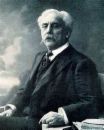 The
music of Gabriel Fauré is remarkable for its harmonic
refinement. The last five of his Nocturnes and his Nine
Preludes (composed at age 65) contain the essence of an artistic
oeuvre which is as varied in texture as it is sometimes stripped to
bare essentials. The Ninth Prelude in E minor, unfolds with moving
expression before ending in the calm of E major.
The
music of Gabriel Fauré is remarkable for its harmonic
refinement. The last five of his Nocturnes and his Nine
Preludes (composed at age 65) contain the essence of an artistic
oeuvre which is as varied in texture as it is sometimes stripped to
bare essentials. The Ninth Prelude in E minor, unfolds with moving
expression before ending in the calm of E major.
 Rimsky-Korsakov
was very active in his sixties, even dismissed from the St Petersburg
Conservatoire for siding with the students during political unrest.
The Tsar Dodn on the Battlefield is characteristic of his late work,
with an incredible sense of tone and colour.
Rimsky-Korsakov
was very active in his sixties, even dismissed from the St Petersburg
Conservatoire for siding with the students during political unrest.
The Tsar Dodn on the Battlefield is characteristic of his late work,
with an incredible sense of tone and colour.
 It
is tempting to speculate that Edward Elgar may have written more
works in later life, such as the Cello Concerto, the Piano Quintet
and the fragments of the Third Symphony were composed after the age
of 60: however, the death of his wife in 1920 seems to have stilled
his output. The Adagio from the Cello concerto exemplifies the
deep poignancy of his later work.
It
is tempting to speculate that Edward Elgar may have written more
works in later life, such as the Cello Concerto, the Piano Quintet
and the fragments of the Third Symphony were composed after the age
of 60: however, the death of his wife in 1920 seems to have stilled
his output. The Adagio from the Cello concerto exemplifies the
deep poignancy of his later work.
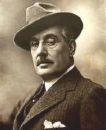 Puccini's
Turandot is his most advanced work, with a high level of dissonance
and pungency. Puccini devoted considerable effort into this, his most
forward looking of his operas, and least eight authentic Chinese
tunes have been identified.
Puccini's
Turandot is his most advanced work, with a high level of dissonance
and pungency. Puccini devoted considerable effort into this, his most
forward looking of his operas, and least eight authentic Chinese
tunes have been identified.
 Leos
Janacek, who at the age of 50 produced in the opera Jenufa,
one of the great work of the 20th century, thereafter
developed still further in this new direction. By nature a dramatist,
among his great works are the operas Katya Kabanova (age 67),
From the House of the Dead (age 76), the Cunning Little
Vixen (age 69) and exultant Glagolitic Mass (age 72). The
extraordinary Glagolitic mass of Janacek was written at the age of 72
and is possibly the most powerful liturgical work of the
20th century. It was interesting that a critic in the
local newspaper wrote: "Janacek, now that he is an old man, feels
with increasing urgency that the expression of his belief in God must
not be absent from his life's work". Furious, Janacek retaliated on a
postcard - "I am not an old man and I am not a believer until I see
for myself".
Leos
Janacek, who at the age of 50 produced in the opera Jenufa,
one of the great work of the 20th century, thereafter
developed still further in this new direction. By nature a dramatist,
among his great works are the operas Katya Kabanova (age 67),
From the House of the Dead (age 76), the Cunning Little
Vixen (age 69) and exultant Glagolitic Mass (age 72). The
extraordinary Glagolitic mass of Janacek was written at the age of 72
and is possibly the most powerful liturgical work of the
20th century. It was interesting that a critic in the
local newspaper wrote: "Janacek, now that he is an old man, feels
with increasing urgency that the expression of his belief in God must
not be absent from his life's work". Furious, Janacek retaliated on a
postcard - "I am not an old man and I am not a believer until I see
for myself".
Indeed, although the text is ecclesiastical Latin, Janacek's setting is anything but conventionally religious. "I want to show my people how to talk to God" he said, "the Cathedral stretches to the vaults of heaven, its candles are the tall pine trees with starts at their tops, the fragrance of the moist woods of Luhacovice is its incense; its bells are sheep bells, my work deals with this cathedral. I depict in it to a certain extent the legend which says that Christ was hanged on the cross and that heaven was torn asunder. Well I am making thunder and lightening and nightingales, thrushes, ducklings and geese make music with me."
 Nielsen
compsed his 6th symphony at the age of 60. After the
tumultous 4th and 5th symphonies, the ambiguity
of tonality and direction in this late masterpiece are typical of
late life composition.
Nielsen
compsed his 6th symphony at the age of 60. After the
tumultous 4th and 5th symphonies, the ambiguity
of tonality and direction in this late masterpiece are typical of
late life composition.
 The
Rhapsody on a Theme by Paganini was one of a number of increasingly
sophisticated works written after the age of 60 by Sergei Rachmaninov
(1873-1943). Their number is small, as in exile, Rachmaninov found it
difficult to recreate the tranquility of his holiday villa in Russia
which was central to his earlier copositions.
The
Rhapsody on a Theme by Paganini was one of a number of increasingly
sophisticated works written after the age of 60 by Sergei Rachmaninov
(1873-1943). Their number is small, as in exile, Rachmaninov found it
difficult to recreate the tranquility of his holiday villa in Russia
which was central to his earlier copositions.
 Despite
poverty and illness, Bela Bartok (1881-1945) continued to compose
during his exile in his sixties in the United States. The dazzling
Concerto for Orchestra, commissioned by Koussevitsky in 1943
and first performed in 1944 and the sonata for violin commissioned by
Yehudi Menuhin are among his last works. Menuhin did not expect much
of his commission and was stunned by the result. "Little did I
foresee that he would write me one of the masterpieces of all
time....the most important composition for violin alone since
Bach."
Despite
poverty and illness, Bela Bartok (1881-1945) continued to compose
during his exile in his sixties in the United States. The dazzling
Concerto for Orchestra, commissioned by Koussevitsky in 1943
and first performed in 1944 and the sonata for violin commissioned by
Yehudi Menuhin are among his last works. Menuhin did not expect much
of his commission and was stunned by the result. "Little did I
foresee that he would write me one of the masterpieces of all
time....the most important composition for violin alone since
Bach."
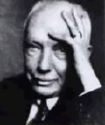 Richard
Strauss is very often the composer most associated in the popular
mind with late life creativity. This is on the basis of several
masterpieces including the elegant Capriccio at age 77 and
Metamorphosen at age 81. Metamorphosen is a study in C minor for 23
solo strings which was written in response to the destruction of
Munich and its Opera House. As an elegy of for a nationís
culture it is unrivalled and incomparable. Between the ages of 82 and
84 he set three poems of his old acquaintance Herman Hesse and one by
Eichendorff to music. Strauss never heard these Four Last Songs
performed and they are unequalled in their sense of adistillation of
a life of high artistic creativity. In Im Abendrot, a large orchestra
is required, and in the last line one can hear a quotation of the
transfiguration theme from his tone poem Death and
Transfiguration.
Richard
Strauss is very often the composer most associated in the popular
mind with late life creativity. This is on the basis of several
masterpieces including the elegant Capriccio at age 77 and
Metamorphosen at age 81. Metamorphosen is a study in C minor for 23
solo strings which was written in response to the destruction of
Munich and its Opera House. As an elegy of for a nationís
culture it is unrivalled and incomparable. Between the ages of 82 and
84 he set three poems of his old acquaintance Herman Hesse and one by
Eichendorff to music. Strauss never heard these Four Last Songs
performed and they are unequalled in their sense of adistillation of
a life of high artistic creativity. In Im Abendrot, a large orchestra
is required, and in the last line one can hear a quotation of the
transfiguration theme from his tone poem Death and
Transfiguration.
Prokofiev (1891-1953) was a prolific composer, and the last of his symphonies was completed at the age of 61, one year before his death. An air of tenderness marks the Andante espressivo from this deceptively simple symphony: after variations offered of the principal theme, before the return of the theme itself.
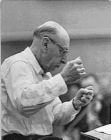 The
creativity of Igor Stravinsky in later life is quite extraordinary.
From the Rake's Progress, at age 69 to Agon age 71 to Abraham and
Isaac at age 81, his genius was unabated. Although various trends can
be noted - neo-classicism, serialism - the music rises above these
narrow categories. This is as it should be - Stravinsky hated labels.
Interviewed while composing the Rake's Progress, Hubert Roussell
noted: "Neo-classicism", he scoffed, "a label that means nothing
whatever. I will show you where to put it". And he gave his derriere
a firm pat. The Rake's Progress shows the influences of Gluck's
Alceste and Verdiís Falstaff for its continuous narration
through song.
The
creativity of Igor Stravinsky in later life is quite extraordinary.
From the Rake's Progress, at age 69 to Agon age 71 to Abraham and
Isaac at age 81, his genius was unabated. Although various trends can
be noted - neo-classicism, serialism - the music rises above these
narrow categories. This is as it should be - Stravinsky hated labels.
Interviewed while composing the Rake's Progress, Hubert Roussell
noted: "Neo-classicism", he scoffed, "a label that means nothing
whatever. I will show you where to put it". And he gave his derriere
a firm pat. The Rake's Progress shows the influences of Gluck's
Alceste and Verdiís Falstaff for its continuous narration
through song.
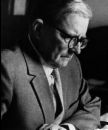 The
life of Dmitri Shostakovich (1906-1975) is often considered to be
mirrored in the course of his symphonies. Work written after the age
60 include the 14th and 15th symphonies, the
string quartets 11-15, the 2nd Violin and Cello Concertos
and the Suite on Verses by Michaelangelo. The 15th
symphony is an enigmatic work, although for the most part clear and
transparently written. In the first movement snatches of
Rossiniís William Tell are quoted, and the composer described
this movement as describing ëchildhood ñ just a toy shop,
with a cloudless sky aboveí but a deeper ironic sense is
evident.
The
life of Dmitri Shostakovich (1906-1975) is often considered to be
mirrored in the course of his symphonies. Work written after the age
60 include the 14th and 15th symphonies, the
string quartets 11-15, the 2nd Violin and Cello Concertos
and the Suite on Verses by Michaelangelo. The 15th
symphony is an enigmatic work, although for the most part clear and
transparently written. In the first movement snatches of
Rossiniís William Tell are quoted, and the composer described
this movement as describing ëchildhood ñ just a toy shop,
with a cloudless sky aboveí but a deeper ironic sense is
evident.
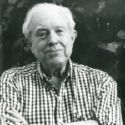 Elliot
Carter is also widely recognised as a torch-bearer for late life
creativity. Carter has always been highly individualist: having
abandoned his neo-classical beginnings and rejected serialism, he has
developed a personal style in which metrical and time relationships
play a basic part. He is quoted as saying: "I decided that I would
just write whatever interested me, whatever expressive conceptions
and feelings that I had without concern for an existing public". His
three occasions for orchestra were written at the age of 78 and
81.
Elliot
Carter is also widely recognised as a torch-bearer for late life
creativity. Carter has always been highly individualist: having
abandoned his neo-classical beginnings and rejected serialism, he has
developed a personal style in which metrical and time relationships
play a basic part. He is quoted as saying: "I decided that I would
just write whatever interested me, whatever expressive conceptions
and feelings that I had without concern for an existing public". His
three occasions for orchestra were written at the age of 78 and
81.
 Our
lone Irish contribution in this survey comes from Gerard Victory's
Ultima Rerum. Composed over several years until its completion at the
age of 63, this powerful work draws on texts by Blake, Whitman, early
Irish poems, the Koran, Navajo texts and incorporates them with the
Requiem of the Roman Rite.
Our
lone Irish contribution in this survey comes from Gerard Victory's
Ultima Rerum. Composed over several years until its completion at the
age of 63, this powerful work draws on texts by Blake, Whitman, early
Irish poems, the Koran, Navajo texts and incorporates them with the
Requiem of the Roman Rite.
 The
sources of Olivier Messaien's music are primarily his Catholic faith,
birdsong and the traditional rhythms and modes found in mediaeval
music and in the music of India, Japan, Bali, the Andes and Greece.
He was prolific in later life, with the thrice recorded opera, St
Francois d'Assise, concertante works such as Des Canyons aux etoiles
and the massive organ work Livre du Saint Sacrement, composed at age
76. This is the longest work in the organ repertory!
The
sources of Olivier Messaien's music are primarily his Catholic faith,
birdsong and the traditional rhythms and modes found in mediaeval
music and in the music of India, Japan, Bali, the Andes and Greece.
He was prolific in later life, with the thrice recorded opera, St
Francois d'Assise, concertante works such as Des Canyons aux etoiles
and the massive organ work Livre du Saint Sacrement, composed at age
76. This is the longest work in the organ repertory!
 The
mature career of Witold Lutoslawski has been extraordinarily
productive, and includes the 3rd and 4th
symphonies, Chain 3 for violin and orchestra and the Piano
Concerto. The Piano Concerto was first performed in 1988:
in the movement II, the piano plays almost continuously
against a kaleidoscopically changing orchestral
background.
The
mature career of Witold Lutoslawski has been extraordinarily
productive, and includes the 3rd and 4th
symphonies, Chain 3 for violin and orchestra and the Piano
Concerto. The Piano Concerto was first performed in 1988:
in the movement II, the piano plays almost continuously
against a kaleidoscopically changing orchestral
background.
Age-Related Health Care, Adelaide and Meath Hospital Dublin
© Desmond O'Neill 2006